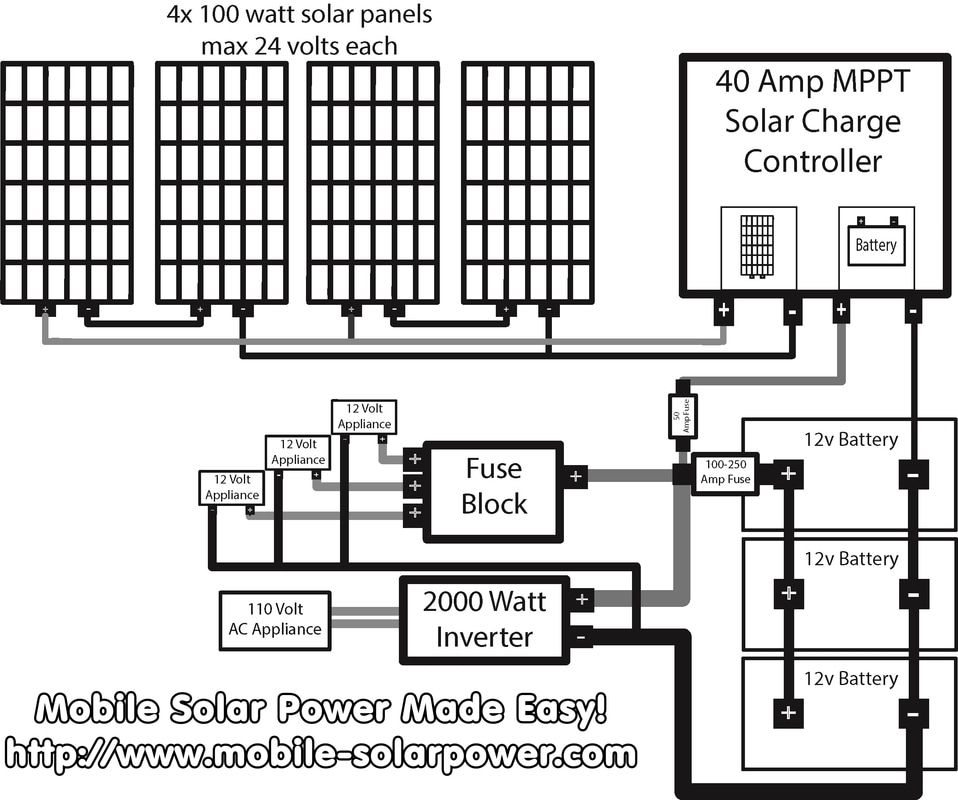It feels like like you might be happy with a DIY "portable power station" or "solar generator" (use the forum search to find examples, Will has some
recommendations too) except you don't really need the portable part. The basic components you're going to be shopping for are:
* Solar panels
* A solar charge controller (takes the power from the panels and uses it to charge your batteries)
* A battery bank
* An inverter to convert power from the batteries into 120V AC power.
Start looking at Will's recommended systems like this one:
Building a vehicle mounted solar power system? Let me help.
www.mobile-solarpower.com
Read through that one and others to get familiar with the names of things and how they connect.
This is also a good starting point.
The Basics: Solar Panels: Batteries: Charge Controllers: Inverters: Converters: Wiring: [/LIST] Grounding (Shorts): Breaking (Over-current): Clamping (Surges): Putting it all together: Safety and Troubleshooting: Other Good References:

diysolarforum.com
For the basics on electricity as it applies to these systems, try this:
https://diysolarforum.com/ewr-carta/needtoknow/
IMO, where you need to start if figure out how much power you actually need, and how much capacity. It might be helpful to think of power (watts) like gasoline and capacity (amp-hours, or watt-hours) like the size of a gasoline tank. Example:
If you need one gallon to run an engine for an hour and you have a four gallon tank, you can run the engine for four hours. Back to electricty. If need to run an 1000 watt appliance for 4 hours, you need 4000 watt-hours of battery capacity. The reason it's important to figure out your power and capacity needs first is that everything you buy is determined by this.
If you just decide "two 120V 15A circuits", you'll be probably be over buying for everything, but it will work. Here's an example of how using more careful power needs can help.
Your example is 2 outlets, each 120 volts x 12 amps (15A circuits in a house are usually rated for 12A continuous) = 1440 watts. Two of those is 2880W of output. Let's want you need to run full out for 24 hours. 24hrs x 2800W = 69120 watt-hours. This is usually given in kilowatt-hours instead, so 69.120kWh. So your system needs to provide about 3000W of power and you need a little over 69kWh of usable capacity. When you start pricing things, you'll see that is a lot of battery capacity for a starter system.
Instead, maybe you look for specs on the fridge and the window ac unit (often on stickers, the back panel, or a website) and decide that while you may need about 3000W peak, but averaged over a day, you really only need 300W. That's 7200 watt-hours, or 7.2kWh. That's a lot smaller system. A REALLY helpful tool to figure out your exact load is a
kill-a-watt or something similar. You can record total usage (kilowatt-hours or kWh) for an day.
Once you know both your power (watts) and capacity (kWh) needs, that will let you know how big an inverter you need and how much battery capacity you need. With that you can then start to decide how much power you need from solar (how fast do you want to recharge this?).
If all this is overwhelming, one place you could simplify is to buy an
all-in-one solar system, that one piece of gear will be the "hub" the panels, the battery, and the load (the 120V AC outlets) will connect to. You still need to estimate your power and capacity needs.
One last thing to an already too long post

You'll come across this choice of 12, 24, or 48V (volts) system. Roughly speaking, the more power you need (3000W is my guess where you'll end up), the higher voltage system you want. This is because watts = volts x amps. Getting 3000W from a 12V system is 250A, getting the same 3000W from a 48V system is 62.5A. Why does that matter? Lower amps means smaller gauge wire and generally less power loss to heat. It's the same thing with electrical extension cords. Why is it bad to run a circular saw (~1500W) over a very long and very small extension cord? Because (simplifying a bit) a lot of amps running down the cord heats it up and that can be dangerous. larger diameter (bigger gauge) cord have less resistance so heat up less for the same number of amps. This is also why some appliances are 240V vs 120V.




